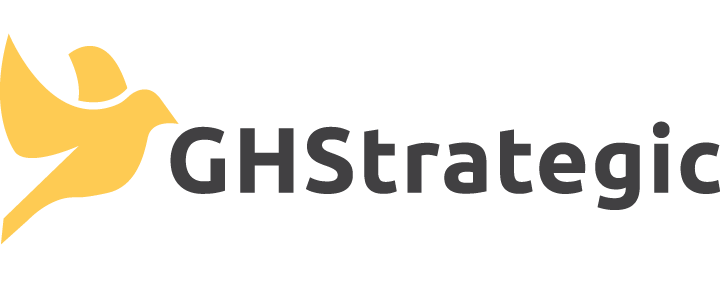SOCIAL MEDIA
How Local News Organizations Can Take Advantage of Facebook’s New Algorithm Changes

Dan Servantes, GHStrategic
February 23, 2018
In January 2018, Facebook announced two major algorithm changes. For the uninitiated, Facebook’s algorithm determines what appears in your Newsfeed and how often. The changes are as follows:
1. Posts from local news publishers (newspapers, TV stations, blogs) will be given priority over national news publishers. “Local” is determined by having a high concentration of engagement in a small geographic region.
2. Posts from family and friends will be prioritized. Posts from pages (businesses) will receive less reach. In order for a page to receive organic reach on their posts, Facebook is looking for specific metrics to be hit, such as people sharing a post and the length of comments.
Facebook tweaks their algorithm constantly with little fanfare. Now is a rare occurrence when Zuckerberg and his VPs are telling us exactly what they want to see on the platform. For local news organizations, this is a golden opportunity to leverage the platform.

The Pivot to Local News
In 2017, Mark Zuckerberg took a tour of the United States. During the trip, he took the time to meet with Facebook users in places that don’t typically get a voice in the tech-world bubble. His discussions led to the following revelation:
When I traveled around the country last year, one theme people kept telling me is how much we all have in common if we can get past some of the most divisive national issues. Many people told me they thought that if we could turn down the temperature on the more divisive issues and instead focus on concrete local issues, then we’d all make more progress together.
How does this revelation manifest itself in the Facebook algorithm? As described on the Facebook newsroom, if the readers of a page are all in a (relatively) small geographic area, the publisher is designated as a “local publisher”. If a user follows the local publisher page, or if a friend shares a local publisher’s post, it will be more likely to show up higher in the user’s newsfeed.
Using Conversation to Drive Engagement
Coupled with Facebook’s emphasis on local news is their prioritization of posts from friends and family. This doesn’t just mean original posts from friends and family, it could be meaningful engagement from friends and family on a page’s post. An example of this would be a share or a long comment on a post linking to a breaking news story.
To take advantage of this emphasis on engagement, publishers must optimize for shares and meaningful comments. In the past, publishers would optimize for clicks. This lead to articles with click-bait headlines and little substance, listicles, and other “junk food”-type content. Facebook has been moving away from rewarding that type of content over the past couple years. Now, Facebook wants to reward content that creates a conversation in the publisher’s region.
It is also important to note that articles are not the only (or even the best) type of content to drive engagement. Video is a massively important vehicle for storytelling and generating meaningful engagement. Video is also easy to consume on a smartphone, an important characteristic for people that are using Facebook on mobile and tablets. Facebook particularly wants to keep people on their platform. So any time you post a video natively, they will reward you with greater reach. If you link to an article on your website or link to a Youtube video, you will see a smaller reach.
Generating ROI from Facebook
It is one thing to generate sustained engagement on social media. It is another to turn this engagement into revenue. Here are a few examples how to turn these video views, new page likes, and increased engagement into tangible return on investment:
- New page likes are top of funnel leads that can now be approached with deeper content and CTAs
- Traffic to your website will generate advertising revenue
- People that watch your videos can be retargeted with ads using Facebook’s custom audiences tool
- More engagement means more people will see each of your posts, which will increase the effectiveness of future announcements and CTAs
- Videos are great sources of data to see who is consuming your content (age, location, gender, relevant pages)
Final Notes
1. It is imperative to understand your audience and their emotional connection to your brand. Why do they trust your news over competing publishers, why do they keep on coming back, and, importantly, why do they feel better about themselves when they use your service? At GHStrategic, we call this the “Mirror”. The “Mirror” means that brands must not conflate “Product” with “Purpose”. For example, Apple’s Purpose is not laptops or iPads, but rather to reflect back at their customers a heightened sense of their Creativity by having used an Apple product. For a local news organization, you are not selling newspapers and advertising space, you are selling a membership to your town or region that allows individuals to be connected as a community. By refining this mirror, you can better develop brand loyalty and resist commoditization.
2. To effectively foster a community, a brand’s digital properties must be Social, Fun, and Competitive (SFC). Social is the most obvious characteristic; can people share your content with their friends? Are they engaging with each other using your product as an impetus for conversation? Fun means that your product is not boring and creates the necessary dopamine hits that makes an individual want to come back again and again. Competitive is not a win/lose scenario, but rather the feeling of achievement that comes from an aspirational game-mechanics element rewarding users for their loyalty and engagement. It is most effective to develop the SFC after going through the GHS Models (of which, the “Mirror” is the first model).
